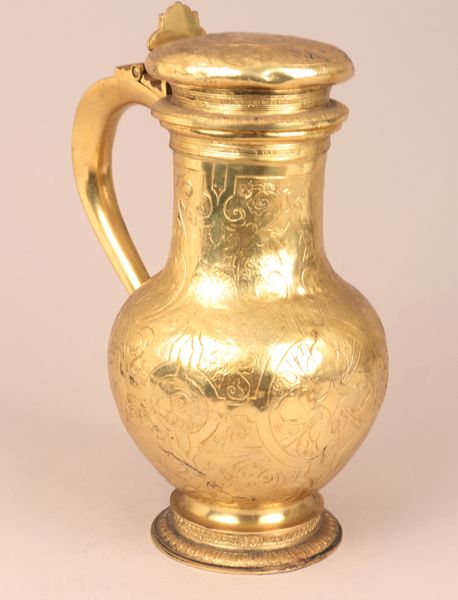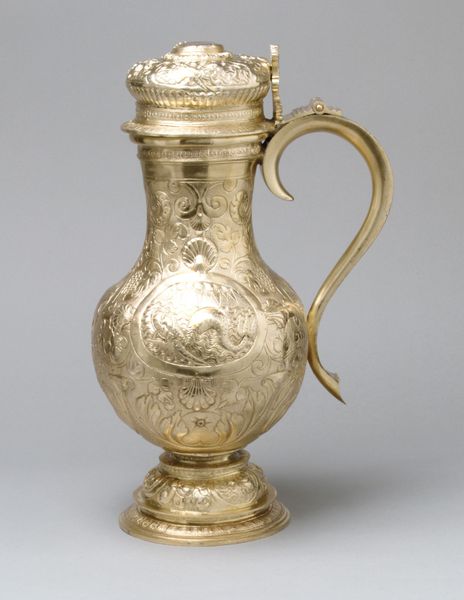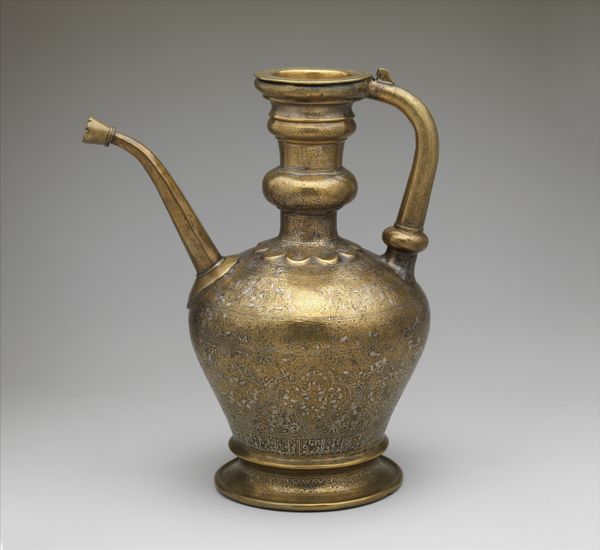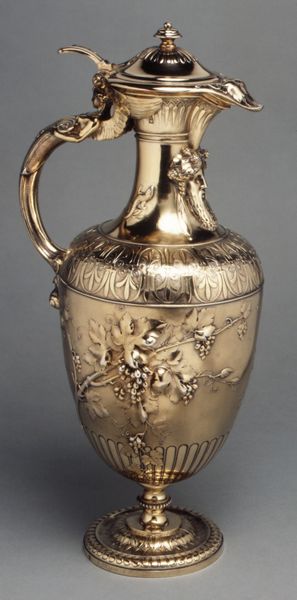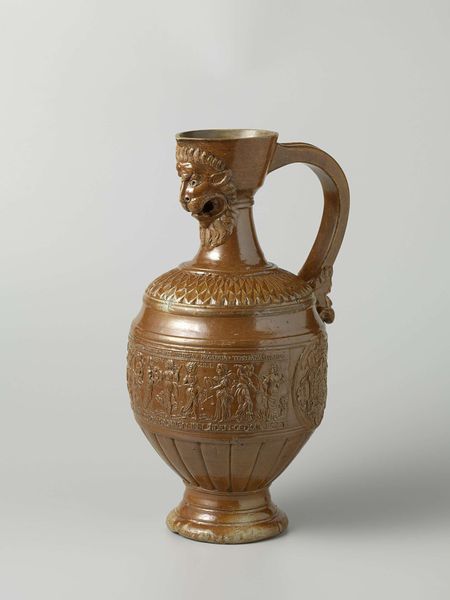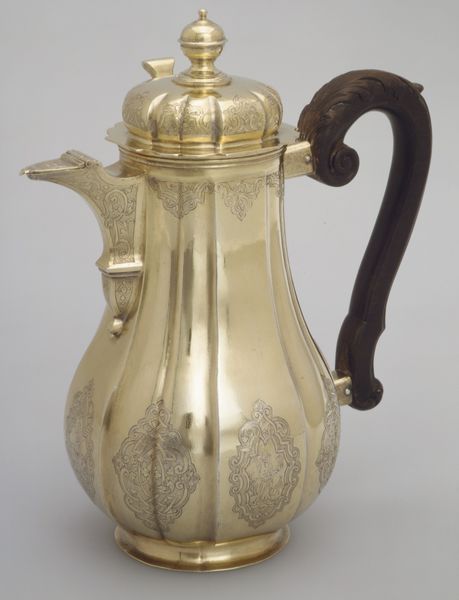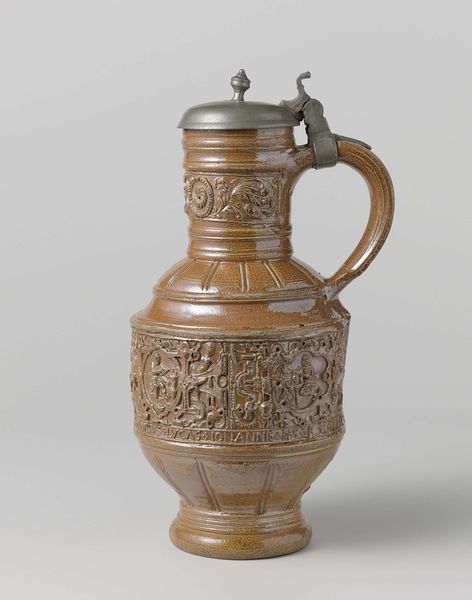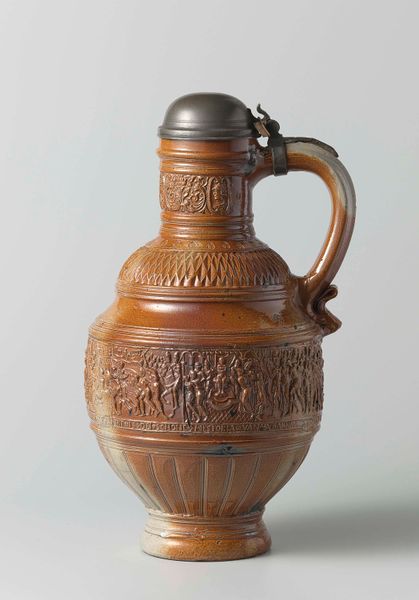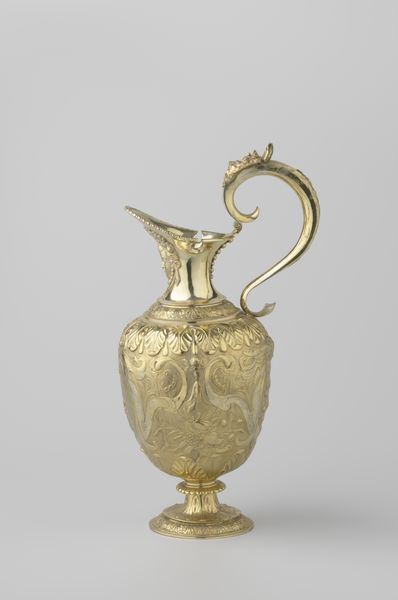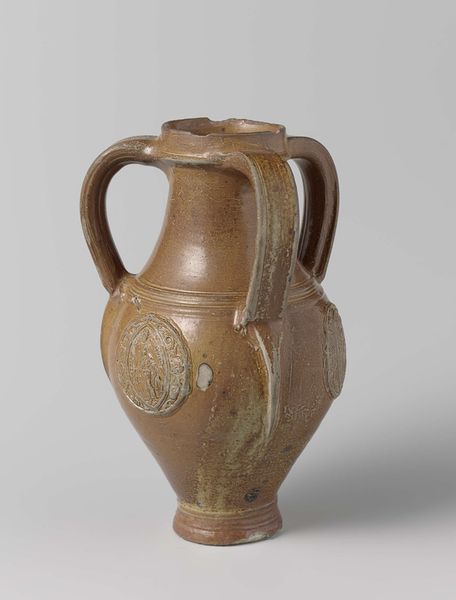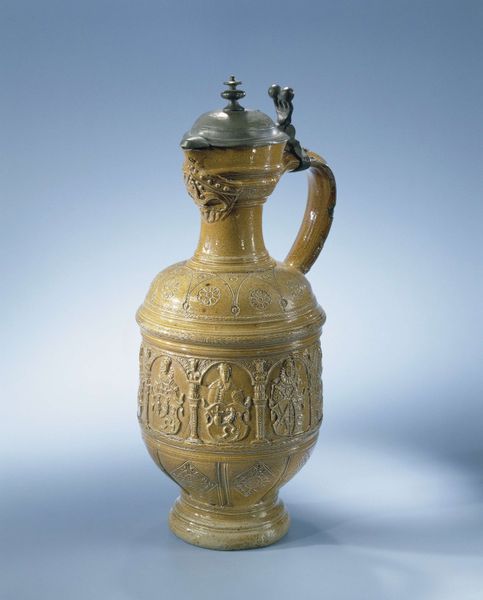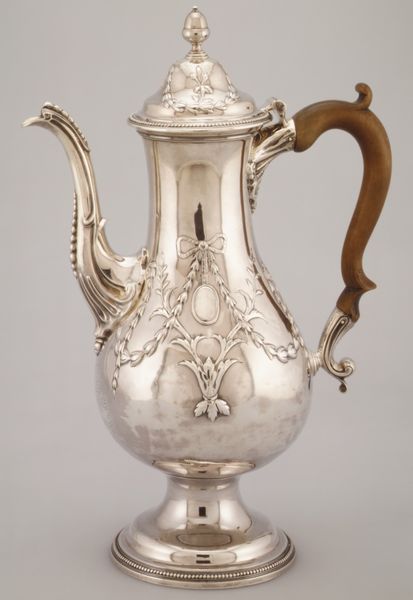
metal, sculpture
#
metal
#
sculpture
#
decorative-art
Dimensions: Height: 12 1/2 in. (31.8 cm)
Copyright: Public Domain
Editor: This gilded metal flagon by Elkington & Co. is from the 19th century and currently resides at the Metropolitan Museum of Art. It seems to blend opulence and functionality. How should we interpret this object in a contemporary context? Curator: This piece really allows us to investigate 19th-century societal values through material culture. We have to ask: who was commissioning such lavish items, and what did their consumption signify? Think about the rise of industrialization, burgeoning class structures, and the ethics of acquiring the resources used in such decorative arts. What statements are being made? Editor: So, you're saying it is a marker of social status. Is the artistry also a kind of... performance? Curator: Exactly. It goes beyond mere functionality, entering the realm of symbolic capital. The intricate designs etched into the metal—what stories might those be telling, or perhaps concealing? How are women positioned within this culture of extravagant consumption? It’s vital we unpack these narratives and question whose stories are being told and whose are erased through such displays. Editor: That’s fascinating. I hadn't considered it in that light, especially regarding the unspoken stories of labor and access. Curator: Art isn't divorced from social injustice; often it is deeply entwined. Pieces like this can serve as potent reminders of the uneven distribution of wealth and power. By engaging critically with art history, we can start essential dialogues. Editor: It definitely makes me think differently about decorative art—less about aesthetics and more about socio-economic messages. Curator: That's what it’s all about! The point is to peel back the layers of history and really dissect who benefits, even today, from those power dynamics represented within these works.
Comments
No comments
Be the first to comment and join the conversation on the ultimate creative platform.
